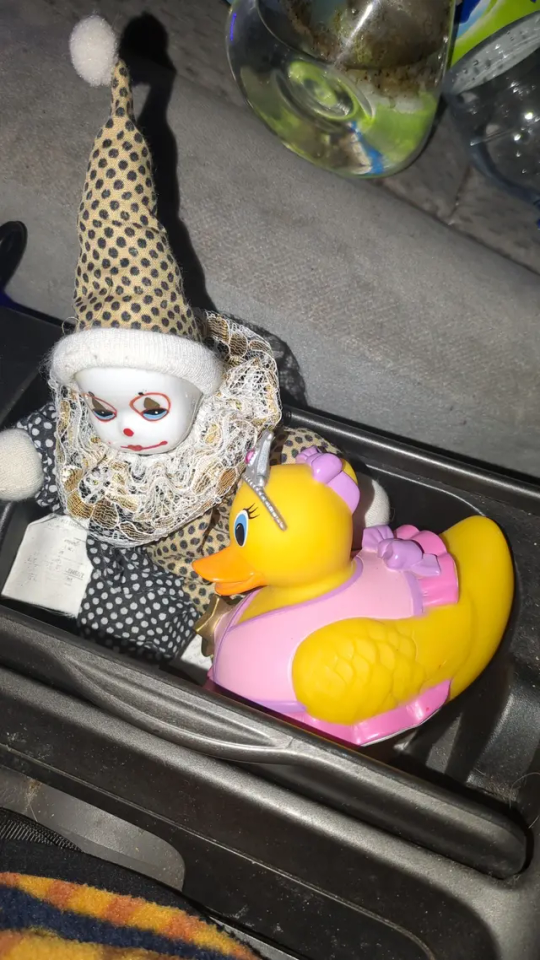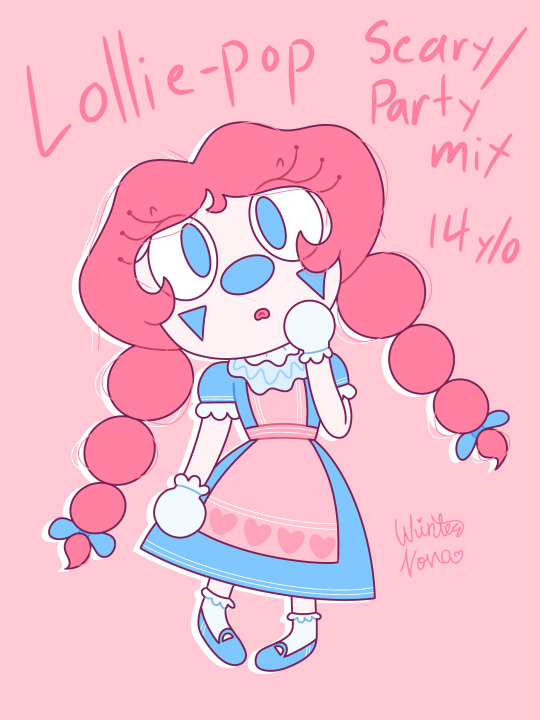#clown pet
Explore tagged Tumblr posts
Text
Gooooood morning everyone! And happy clown week!

#clown pet#clown posting#clownblr#clownery#clowncore#clowns#clown husbandry#silliness#clown#clown week
13K notes
·
View notes
Text

#clown#clownblr#clowncore#clowns#clown posting#clown blog#clown doll#clown husbandry#clown pet#clown care#clown friend
69 notes
·
View notes
Text

I made Honk Honk a little portrait to have around home!! I'm sad i can't show pictures of this lovely little bean but i know respecting this boundary is important as clowns have a very long term memory and can remember humans and their actions for many years!! Who knows, maybe someday he'll be able to pose for a photo again and be able to stand on a stage or circus ring like all the other party clowns around!
#clown#clown care#clown husbandry#clown pet#clowns#memes#clown posting#clowncore#art#artwork#artists on tumblr#art style#illustration#clown art#clown oc#clownblr#party clown
201 notes
·
View notes
Text

Louis-Aimé and his gf <3
90 notes
·
View notes
Text
two words
clown larvae
discuss.
#clown#clown husbandry#clown posting#sillyposting#clowning#clowns#clown care#clown pet#clowncore#clownblr
59 notes
·
View notes
Text
Howdy yall!
I’m new to the clown husbandry community and I’ve been lookin into adopting a rodeo clown. I live in a kinda rural town with access to large open fields, farms and livestock and I love goin outside and getting out of the house, so I’ve got the basics covered in terms of preferred environment! We don’t have rodeos where I am unfortunately but we do have the yearly county fair and other such events so there should be plenty of entertainment for him!
Information for rodeo clown care is a little hard to find, so if anyone has any tips, tricks or resources, please send them my way!!
#clown owning#clown pet#clownblr#clown biology#clown husbandry#clown breeding#picking up my clown soon#rodeo clown#rodeo clown husbandry
27 notes
·
View notes
Text
I have been thinking about getting into clown husbandry. I did some research a few years ago and it definitely was somthing I want to get into. However feel like the community has been quiet and I feel like I stopped seeing the smaller breeds in pet stores. I'm from Jersey and I think I read something about clown ownership being banned here???
any help is appreciated, I have plenty of room for a tent and I work from home so I have all the time to care for them.
7 notes
·
View notes
Text


they’re parenting blue razz, he’s with dad today
#clownblr#clown husbandry#clown doll#morute#creepy cute#parenting#clowncore#clowns#clown pet#clown baby#clown breeds#clown posting
13 notes
·
View notes
Text
Question for clown husbandry Tumblr
Are there such thing as juggalo clown husbands? Are their breeds that are similar? What is the relation between clown husbands and Juggalos? Are certain breeds soothed by Insane Clown Posse music? Can certain breeds be inspired by juggalo culture? Is ICP safe for clown husbands? I NEED TO KNOW MORE
14 notes
·
View notes
Text

My Party/Scary Mix, Lollie-pop!
As you can see, she took most of her colors and looks from what I believe to be her Party side, but she also gives me porcelain doll vibes, so I'm not entirely sure. She eats mostly raw meat and has extreamly sharp teeth and is usually very skiddish with other people, clowns, or animals.
She is not fixed and has a little stray jester boyfriend that I hope to keep and name one day. I hope they have a litter together they would all be just so cute...
#tw unreality#clowncore#clownblr#clown#circuscore#clown oc#clown posting#kidcore#clown husbandry#clown art#artists on tumblr#clowns#circus#clown care#digital aritst#clown doll#digital art#clown friend#pastel clown#clown pet#pastel#partycore
66 notes
·
View notes
Text
my hobo clown, steve unemployments, has been sitting with my juggalo, mr. roach, and staring at him silently. not aggressively, and my juggalo is surprisingly not being aggressive either. they're just looking at each other. they've been doing this for a few hours. is this normal? they have plenty of enrichment and entertainment. are they bored?
11 notes
·
View notes
Text
Attention Clown Owners!
New season means new activities! Depending on the breed, fall can offer many different fun out and indoor activities for your clown, such as:
Leaf piles! Jumping in them, making them, looking at their colors, clowns just seem to like leafs
Pies!!! With fall comes delicious pumpkin (and any other) pies that clowns love!
Pumpkin painting (with clown-safe paint), I wouldn't trust a clown with I knife, but I would trust em with paint! Clowns are natural artists
Scare clown owners, I suggest taking your clown on a stroll to see the Halloween decor around!
339 notes
·
View notes
Text

I got a new one :3
I know I don’t post here very often but I got a new doll and she needs a name
#clown#clownblr#clowncore#clowns#clown posting#clown blog#clown doll#clown husbandry#clown pet#clown care#clown friend
19 notes
·
View notes
Text
I find it very hard to study in libraries because most of them don't provide a play pen for clowns!! Honk honk needs to be distracted while i work, and i can't leave him home alone because he fills my entire room with balloons when i'm gone and then runs around in his unicycle without anyone to look after him. I need more clown safe spaces!
305 notes
·
View notes
Text


Balloune is ready to spark up
#clown#clown doll#clown husbandry#clown pet#clowncore#clown posting#clownblr#cute clown#clown art#weed clown
34 notes
·
View notes
Text
I need Advice.
Okay so, this is my first time asking for this kind of advice since I generally ask my family about this, but today I need your help with my two newly adult clowns, they're a Pierrot and a Harlequin to be more exact. I've had plenty of clowns during my life and I certainly know how to take care of high maintenance clowns and low maintenance ones, I have experience attending to their needs and I can proudly say that I take good care of them, the point is. I've had trouble with my Pierrot and my Harlequin due to certain behaviors I've haven't seen before in other Pierrot's (I have two young Pierrot's and one colorful adult Pierrot) I have and neither in other harlequin's I have seen(I have one of those, but my dad has two of those).
My problem is that my Harlequin has been getting pretty aggressive with my Columbine whenever she tries to get near and say hello to my Pierrot, he has no trouble when she gets near other clowns I own, but he has trouble when she gets near this specific Pierrot. I don't understand why he's been doing this since from what I've read and seen so far is that pretty much male and androgynous clowns swoon and fight over female clowns since they're very rare, but my Harlequin for some reason got pretty possessive with this Pierrot and doesn't want my Columbine nor other female clowns I have (A Columbine that I found recently in a shelter and a Clownette my mum practically raised me with) to get near him and the Pierrot seems to encourage this (at least to some extent). I don't know what to do and I need some advice to at least ease some of the tension that has been growing in the tent thanks to this Harlequin's actions.
20 notes
·
View notes